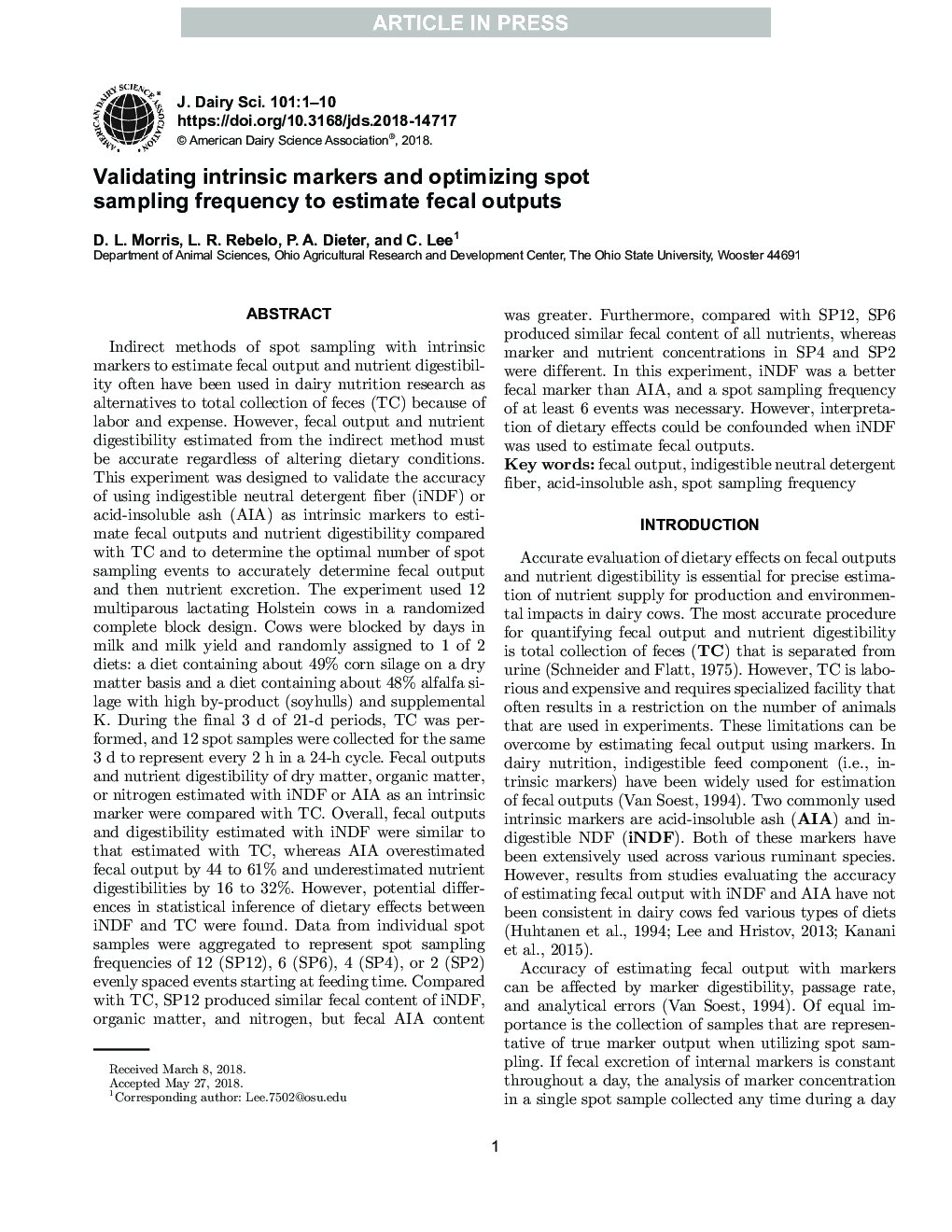| Article ID | Journal | Published Year | Pages | File Type |
|---|---|---|---|---|
| 8956458 | Journal of Dairy Science | 2018 | 10 Pages |
Abstract
Indirect methods of spot sampling with intrinsic markers to estimate fecal output and nutrient digestibility often have been used in dairy nutrition research as alternatives to total collection of feces (TC) because of labor and expense. However, fecal output and nutrient digestibility estimated from the indirect method must be accurate regardless of altering dietary conditions. This experiment was designed to validate the accuracy of using indigestible neutral detergent fiber (iNDF) or acid-insoluble ash (AIA) as intrinsic markers to estimate fecal outputs and nutrient digestibility compared with TC and to determine the optimal number of spot sampling events to accurately determine fecal output and then nutrient excretion. The experiment used 12 multiparous lactating Holstein cows in a randomized complete block design. Cows were blocked by days in milk and milk yield and randomly assigned to 1 of 2 diets: a diet containing about 49% corn silage on a dry matter basis and a diet containing about 48% alfalfa silage with high by-product (soyhulls) and supplemental K. During the final 3 d of 21-d periods, TC was performed, and 12 spot samples were collected for the same 3 d to represent every 2 h in a 24-h cycle. Fecal outputs and nutrient digestibility of dry matter, organic matter, or nitrogen estimated with iNDF or AIA as an intrinsic marker were compared with TC. Overall, fecal outputs and digestibility estimated with iNDF were similar to that estimated with TC, whereas AIA overestimated fecal output by 44 to 61% and underestimated nutrient digestibilities by 16 to 32%. However, potential differences in statistical inference of dietary effects between iNDF and TC were found. Data from individual spot samples were aggregated to represent spot sampling frequencies of 12 (SP12), 6 (SP6), 4 (SP4), or 2 (SP2) evenly spaced events starting at feeding time. Compared with TC, SP12 produced similar fecal content of iNDF, organic matter, and nitrogen, but fecal AIA content was greater. Furthermore, compared with SP12, SP6 produced similar fecal content of all nutrients, whereas marker and nutrient concentrations in SP4 and SP2 were different. In this experiment, iNDF was a better fecal marker than AIA, and a spot sampling frequency of at least 6 events was necessary. However, interpretation of dietary effects could be confounded when iNDF was used to estimate fecal outputs.
Related Topics
Life Sciences
Agricultural and Biological Sciences
Animal Science and Zoology
Authors
D.L. Morris, L.R. Rebelo, P.A. Dieter, C. Lee,
